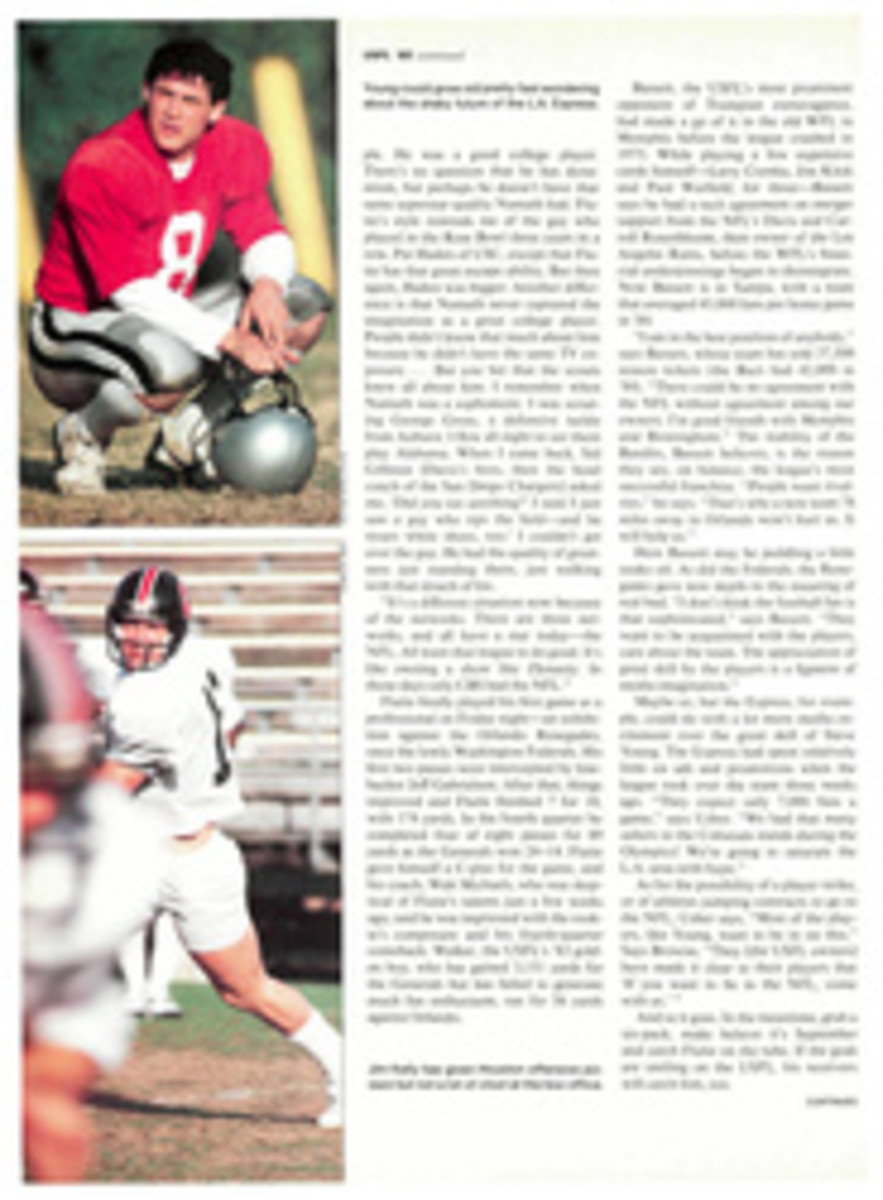
WHEN IT CAME TO DUCK DECOYS, THE PAIUTE INDIANS MADE THEM TO LAST
One of the most unusual finds in the history of Great Basin archaeology occurred 74 years ago in a foul and dung-heaped cave near Lovelock, Nev. Alerted by Paiute Indians familiar with the surrounding marshlands, two entrepreneurs visited the site and smelled, so to speak, a profit.
After five carloads of guano had been removed and shipped to the Hawaiian Fertilizer Company in San Francisco, Indian relics started turning up. Subsequent excavations uncovered everything from mummified puppies to spear-throwers. "An aboriginal people basically used the cave as a closet," explains a present-day archaeologist.
It wasn't until 1924 that the real treasure was discovered. Though the cave had been well scavenged, M.R. Harrington of New York City's Museum of the American Indian concentrated on a largely untouched corner. There he found "an apparently empty storage cache," a pit filled with ashes and lined with stones and reed refuse. "When the layer of mats and basketry was removed," wrote Harrington, "it was seen to be a false bottom, for beneath it lay a bulky package wrapped in rush matting. This contained eleven remarkable decoys made of rushes, most of them feathered and painted to represent ducks."
The decoys, which resemble canvas-back drakes, were about 11 inches long, their bodies formed by 25 or 30 large bulrush stems bound in a tight hairpin and trimmed at the ends to simulate a duck's tail. A billed head, smoothly tied with split reeds, was sewed fast to each body. White feathers were attached lengthwise to the body with twine. "Some waterfowl hunter had hid his decoys here against another season," concluded Harrington.
Duck decoys, the floating simulacra hunters use to lure the real thing from the skies, are as collectible as Chippendale chairs. A resident of Duxbury (where else?), Mass. keeps 1,000 wooden waterfowl in his house; one Canada-goose decoy recently sold for $70,000. But the reed models from Lovelock Cave are the ne plus ultra. "Everybody wants to borrow them," says David Fawcett, the registrar at the Museum of the American Indian, where two of the decoys are on display. "They're the oldest in the world."
Until two years ago the museum was reluctant to establish their age. "We would have had to destroy an entire decoy, or at least a substantial part of one, to get a sample big enough to date," says Dr. Don Fowler (who else?), a Nevada archaeologist. "Nobody wanted to do that because the things are so damn unique. It would be like destroying something out of King Tut's tomb." But last October, using a new technique that requires samples no bigger than a fingernail, it was determined that the birds had been in the cave about 2,000 years.
The decoys have aged well. Their reed armature appears strong and pliant, their paint has hardly faded and they evidence considerably more life than the average museum piece. "What's remarkable," says the museum's director, Dr. Roland Force, "is that they haven't disintegrated. They're made of vegetable matter that normally wouldn't last 100 years. This kind of preservation could only occur in an extremely arid climate."
Until the 1920s, the Northern Paiutes made and used decoys nearly identical to those found in the cave. Replicas are still produced by Ivan George and his son Davin, Paiutes who live on a reservation 45 miles south of Lovelock. Ivan's mother, Wuzie, who died last year at the age of 100, taught him how to make the traditional decoys; the Georges sell them for $62.50. "It tells you something about the persistence of cultural traits and the quality of the object itself," Force says. "Obviously, these decoys worked."
Nobody knows how they were used. The aborigines may have towed the decoys with twine to lead waterfowl into range, and then killed or captured them. Or they may have anchored the decoys and approached underwater, breathing through hollow reeds, grabbing the birds bare-handed.
No doubt the Lovelock ducks would still work today. "Details don't matter much to a duck," says Bob Seabrook, a carver and collector from New Jersey. "I know a guy who was carving heads for his decoys one day. Some kids asked him for a few blocks of wood he'd rejected. They nailed them to two-gallon tin cans and then went out and killed as many ducks as guys using realistic decoys."

